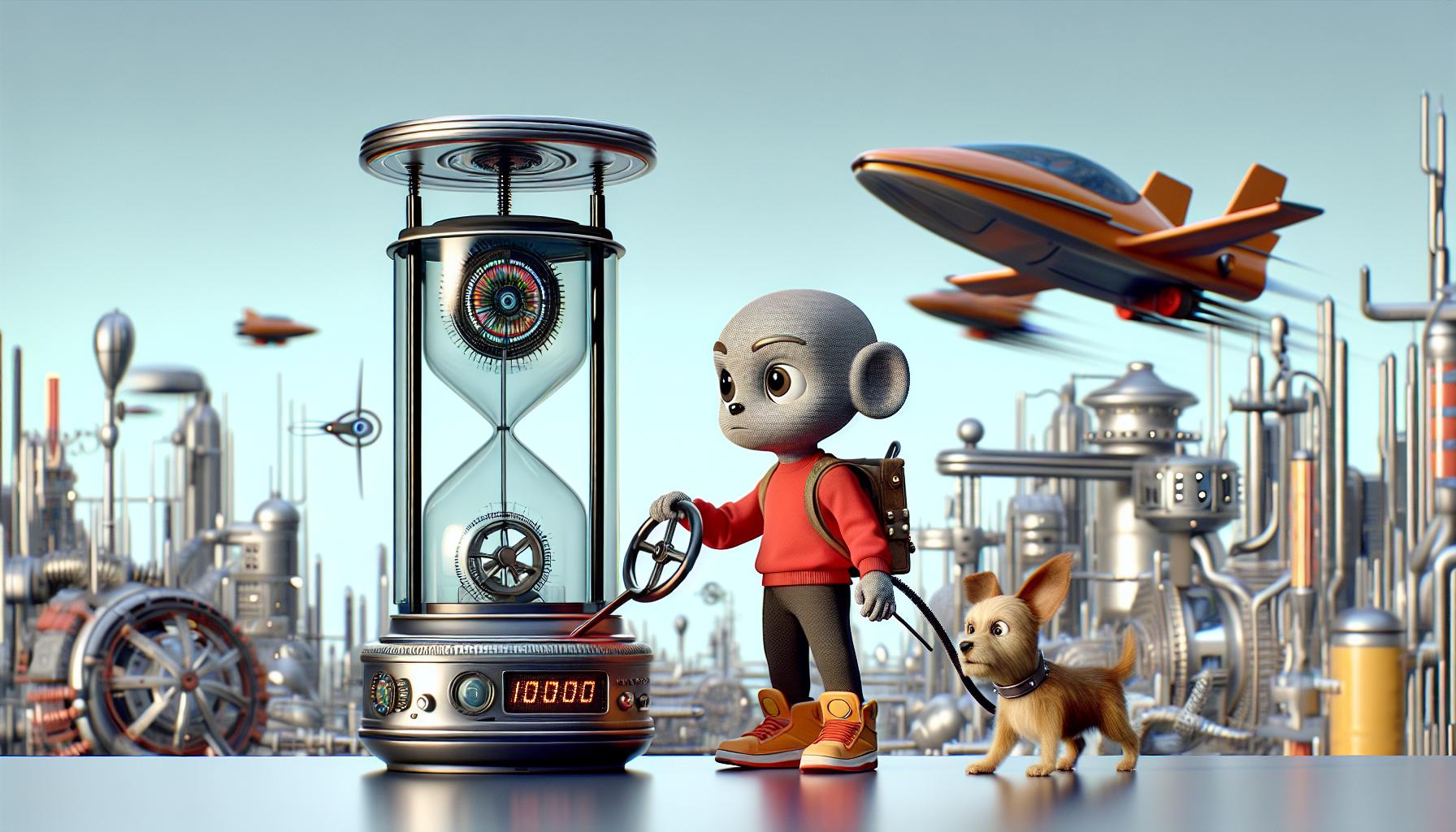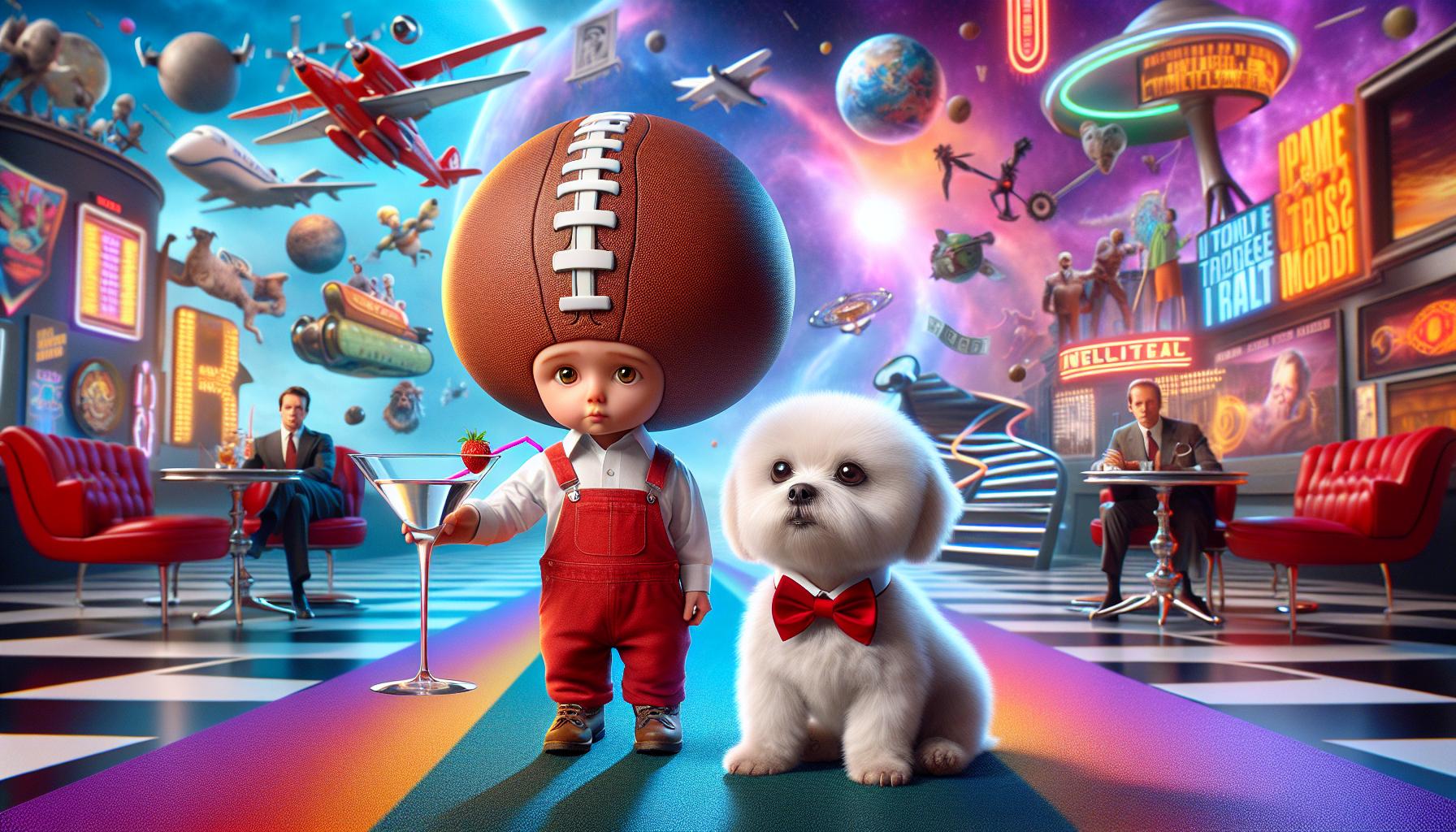Family Guy Time Travel has always pushed the boundaries of animated comedy, and its time travel episodes are no exception. From absurd twists on historical events to hilarious alternate realities, these episodes showcase the show’s unique ability to blend humor with clever storytelling. I can’t help but marvel at how the Griffin family’s misadventures through time not only entertain but also provoke thought about the consequences of altering history.
In this article, I’ll dive into some of the most memorable time travel moments in Family Guy. Whether it’s Stewie’s ambitious schemes or Peter’s outrageous antics, each journey offers a fresh take on the complexities of time travel. Join me as I explore the quirks and laughs that make these episodes stand out in the series.
Key Takeaways
- Innovative Time Travel Concepts: family guy time travel uniquely incorporates time travel to explore humor and narrative, with Stewie Griffin’s inventions often leading the way.
- Memorable Episodes: Key time travel episodes like “Road to the Multiverse” and “The Future Is Now” highlight the show’s blend of comedy with thought-provoking themes and significant twists.
- Character Development: Time travel significantly impacts character arcs, revealing deeper insights into personalities, particularly through the impulsive nature of Peter and the evolving complexity of Stewie.
- Cultural References: The show excels in integrating pop culture parodies within its time travel plots, enhancing the comedic experience while engaging with familiar narratives.
- Fan Engagement: Enthusiastic discussions and theories among fans showcase deep engagement with the show’s themes, character motivations, and its impact on animation and comedy.
Family Guy Time Travel
“Family Guy” incorporates time travel in a distinct manner, utilizing it as a vehicle for humor and narrative exploration. Time travel episodes often feature Stewie Griffin, the genius toddler, and his elaborate inventions that allow him to traverse different historical periods. Peter Griffin, the bumbling father, frequently joins Stewie on these adventures, leading to hilarious and unpredictable outcomes.
The show combines pop culture references with historical events, creating a rich tapestry of comedy that resonates with audiences. For example, in the episode “Road to the Multiverse,” Stewie and Brian travel to alternate universes, showcasing how small changes alter reality. This keen observation of consequence highlights the show’s clever writing.
Through its unique storytelling approach, “Family Guy” challenges viewers to consider the ramifications of their actions. The series effectively balances absurdity with thought-provoking themes. Stewie and Peter’s escapades not only entertain but also provoke reflective thinking about time and personal choices.
Notable Time Travel Episodes

“Family Guy” features several notable time travel episodes that showcase its unique blend of comedy and storytelling. These episodes engage viewers with memorable characters and clever twists.
“Road to the Multiverse”
In “Road to the Multiverse,” Stewie and Brian utilize Stewie’s invention to explore parallel universes. They journey through various realities, each uniquely reflecting different animation styles and cultural references. This episode features a Disney-inspired universe with a wholesome yet dark twist. The duo encounters a universe where the world is ruled by dogs, adding another layer of humor. The significant concept here illustrates how minor changes can dramatically impact reality, emphasizing the show’s signature humorous approach to complex themes.
“The Future Is Now”
“The Future Is Now” showcases a future where Stewie’s ambitions lead him to take drastic measures to achieve his goals. He critically reevaluates his relationships, particularly with Brian, in a futuristic setting filled with advanced technology and odd social dynamics. This episode emphasizes the potential consequences of personal decisions while maintaining the show’s comedic essence. Stewie’s desire to reshape the future offers a humorous exploration of ambition and responsibility, resonating with viewers through its witty dialogue and engaging plot twists.
Impact of Time Travel on Character Development
Time travel in “Family Guy” significantly shapes character arcs, revealing deeper aspects of their personalities. The misadventures through time not only entertain but also provoke growth and introspection among the characters.
Peter Griffin’s Adventures
Peter Griffin’s time-traveling escapades often highlight his impulsive nature and lack of foresight. His reckless decisions create chaos that leads to unexpected consequences, effectively showcasing his character flaws. For instance, in the episode “Peter’s Got Woods,” his decision to travel back in time to relive moments often exposes his misguided priorities, emphasizing his struggle for fulfillment. These chaotic adventures push Peter towards comedic self-awareness, allowing him to occasionally reflect on his actions and their effects on those around him, ultimately providing fleeting moments of character growth.
Stewie’s Time Machine
Stewie Griffin’s time machine serves as a narrative device that amplifies his character development. Initially, Stewie embodies a diabolical genius, obsessed with world domination. However, time travel allows him to confront his insecurities and relationships. In episodes like “The Future Is Now,” Stewie navigates a futuristic world, forcing him to assess his ambitions beyond mere power. Through these experiences, he becomes more relatable, revealing vulnerabilities beneath his arrogant exterior. Time travel highlights Stewie’s evolution from a one-dimensional antagonist to a complex character grappling with identity, relationships, and the consequences of his actions.
Cultural References and Parodies

“Family Guy” excels in weaving cultural references and parodies into its storytelling, particularly in time travel episodes, enhancing humor and narrative depth.
Homages to Popular Films
“Family Guy” frequently pays homage to popular films through its time travel plots. Episodes like “Road to the Multiverse” parody classics such as “Back to the Future” and “A Wrinkle in Time,” incorporating familiar cinematic tropes. The show recreates iconic scenes, such as Stewie and Brian’s encounters with various multiverses that echo cinematic styles and narratives. This approach enriches the viewing experience, allowing fans to appreciate the clever references while enjoying the humor. Additionally, the “The Family Guy 100th Episode Special” features parodies of iconic movies, showcasing how the series blends original comedy with well-known film elements.
Influence on Other Shows
“Family Guy’s” unique take on time travel has influenced numerous animated series. Shows like “The Simpsons” and “Rick and Morty” utilize similar comedic techniques, employing time travel as a device to create absurd situations and explore character dynamics. “Rick and Morty,” in particular, embraces a darker tone while incorporating complex narratives and pop culture references reminiscent of “Family Guy.” The impact of “Family Guy” extends beyond animation, inspiring various live-action comedies that draw on its humor and storytelling methods, signifying its role as a cultural touchstone in media.
Fan Reactions and Theories
Fans of family guy time travel engage deeply with the show’s time travel episodes, often sharing their thoughts and theories online. Community forums buzz with discussions about potential plot connections and character implications, showcasing enthusiasm for the series’ inventive storytelling. Many fans express joy at how the show juxtaposes humor with complex narratives, sparking debates over favorite episodes and moments.
Fan theories frequently emerge around the mechanics of Stewie’s time machine. Some speculate it possesses capabilities beyond mere time travel, postulating that it enables parallel universe navigation. This theory gains traction particularly with episodes like “Road to the Multiverse,” where fans analyze the implications of alternate realities on character choices and development.
Audiences often debate character motivations in time travel contexts. For instance, discussions about Peter’s irresponsible antics evoke varied interpretations of his character arc. Fans draw parallels between Peter’s impulsive nature and the chaos that ensues from tampering with time, emphasizing the show’s commentary on personal choices and consequences.
Viewers also appreciate the layered references embedded in time-travel episodes. Many note how the show pays homage to timeless films through comedic parodies, transforming classic scenes into lighthearted critiques. The interplay of these references invites fans to analyze the cultural commentary intertwined in the humor.
Additionally, social media platforms see trending topics related to the themes highlighted in “Family Guy” time travel episodes. Fans connect the show’s motifs of ambition, responsibility, and self-discovery to their own experiences, reflecting on how these themes resonate beyond the screen. This relatability contributes to the show’s enduring popularity and fosters a vibrant online fan community.
Insightful Storytelling
Family Guy time Travel masterfully uses time travel to blend humor with insightful storytelling. The Griffin family’s escapades remind us that even the most absurd situations can lead to meaningful reflections on life and choices. Stewie and Peter’s adventures not only entertain but also challenge us to think about the consequences of our actions.
As I revisit these memorable episodes, I’m continually impressed by how the show balances comedy and character development. The clever cultural references and parodies enrich the experience, making each time travel plot a unique journey. It’s clear that “Family Guy” has left a lasting mark on animated comedy, inspiring fans and creators alike to explore the endless possibilities of narrative and humor through time travel.

